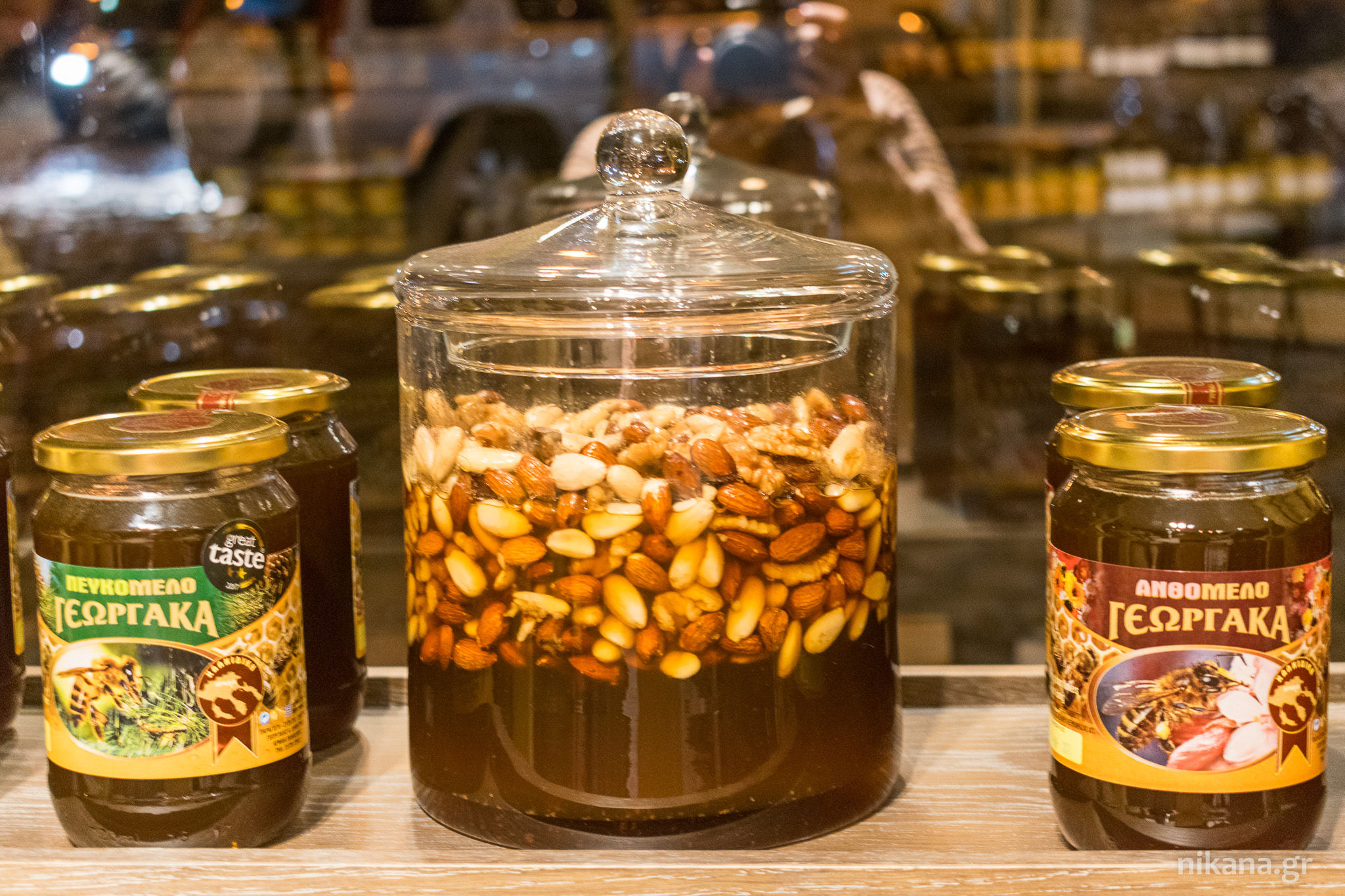Greek honey
Greece has more bee hives per hectare than any other country in Europe, and the Greek honey is considered one of the finest in the world.
This is mainly due to the great diversity of the Greek flora and many sunny days. As a proven high quality product it has a great reputation and as a prestigious product is available in 30 countries on five continents.
The diversity of flora is responsible for different types of honey, and their various characteristic features and tastes.
Greeks consume 1.7kg of honey per capita per year, and that is ranking them as one of the largest or even the largest consumers of honey per capita in the world.
The largest amount of all Greek honey is pine honey, and the rest is from a flower nectar.
Pure flower varieties of honey come from plants such as thyme, orange blossom, heather, chestnut … Greece is unique in production of thyme honey.
Mixed varieties are from wild oregano, wild grass and lavender.
The production of honey dates back to 6000 years before Christ, and the value of honey was known even in ancient times. Even Hippocrates and Aristotle wrote about the honey, it was considered that the nectar was the food of the gods and that Zeus was raised on honey. Hippocrates wrote: “Honey and pollen warm up, clean wounds and sores, cure wounds on the lips, heal wounds”. Aristotle believed that honey prolongs life. Honey as the first sweetener, together with olives and grapes, is the very beginning of the Greek gastronomy.
In some places in Greece, the bride puts a finger in the honey and creates with it a cross above the front door. Fulfilling this custom should provide her with “sweetness” in marital life, but also a good relationship with her mother-in-law.
Thasos is famed because of production high quality honey, and right there in the island you can taste the famous thyme honey, and the most famous and most prized pine honey. Except honey in Thassos you can also buy many different honey products. The most popular is so-called karidaki, young, green walnuts with shell in pine honey and syrup. Do not miss to try the karidaki when visiting Thassos.
Nikiti in Sithonia has been the largest honey production center in Europe for years, and today in Nikiti there are 150 professional beekeepers who manage around 85 000 colonies of bees. The famous honey factory in Nikiti Honey Sithon is one of the largest in Europe. It produces 1200 tons of honey per year for domestic and foreign markets.
Arnea near the Olympics is another place in northern Greece famous for its excellent honey. Honey that is widely known and often wins first quality awards you can buy at Arnea’s central square. You can also buy honey from the cotton in Arnea.
Different parts of Greece are known for different types of honey.
Aegean islands: thyme and pine
Thessaly: cotton, chestnut, fir tree
Chalkidiki: pine, heather
Peloponnesus: thyme, fir tree, chestnut, orange
Western Greece: thyme, orange, chestnut, heather
Central Greece: thyme, fir tree, chestnut
Thrace: cotton, sunflower
The bee hives are often in very inaccessible terrains throughout Greece, so production costs are high, which also affects the price of honey.
The Greek honey is one of the best in the world because it contains more than a hundred different plants that give to it specific taste, and specific pharmaceutical characteristics also.
In Greece there are around 15 000 beekeepers and 1 200 000 bee hives. They produce between 14 and 16 thousand tons of honey per year.
Professional beekeepers (in Greece there are about 3 000 of them) live nomadic life and yearly pass even 30 000 kilometers with their bee hives.
Honey is one of the most valuable gifts from nature to human.
In the group Live from Greece read the comments about Greek honey and some tips about best places to buy honey.
We offer over 2,500 accommodation options. Choose the one that suits you and your family HERE.
Follow us on our social media and stay up to date with everything you are interested in about Greece!
Facebook:Nikana.gr
Instagram: @nikana.gr
Tiktok: nikana.gr
Facebook grupa: Live from Greece
YouTube kanal @NikanaTravel
Write to us at e-mail: nikana@nikana.gr
Our site nikana.gr is the leading source of information about Greece.
2 comments
Post a Comment
NOTE
All your questions in the comments will receive an answer via email so check your inbox shortly after you posted comment. For more detailed questions and responses, contact us via mail nikana@nikana.gr.







Dragan13.09.2023 18:00:20
Gde kod nas moze da se kupi grcki med od pomorandze?
Gordana Milić05.10.2021 12:54:09
Letovala sam na Tasosu i kupila borov med koji je izvanrednog ukusa, a i cena je manja nego sto je cena meda kod nas.